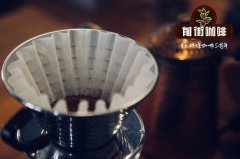What is anaerobic fermentation in coffee treatment? Do anaerobic fermented beans taste good?

Professional coffee knowledge exchange more coffee bean information please follow the coffee workshop (Wechat official account cafe_style)
Today, Qianjie Coffee introduces what is anaerobic fermentation?
Anaerobic fermentation is not a new term in fermented food. Anaerobic bacteria are involved in the fermentation process of kimchi and wine. Now that we know that the post-processing of coffee beans is a fermentation process, the rest is the principle of fermentation.
Traditional sun exposure, water washing and honey treatment are mostly exposed to an open environment, so the existing bacteria that interact with them are usually oxygen-loving bacteria, such as photosynthetic bacteria and yeasts (yeast is facultative or oxygen-free). Anaerobic fermentation naturally uses the operating mechanism of anaerobic bacteria, such as lactic acid bacteria, filamentous bacteria and yeasts.
To produce anaerobic fermentation is not to throw any bacteria to the coffee beans, but to create an environment for the coffee beans to ferment, so it is usually necessary
1. Closed enclosed space: if you don't need to borrow other flavors, you should use easy-to-clean storage space such as white iron or stainless steel, but white iron is too expensive. (I don't think I can use a gasoline can.)
two。 Control the temperature and grasp the right time
3. Enough high-quality coffee beans (with a certain sweetness)
As for the need for peeling, dry treatment or wet treatment, this is the trade secret of the landowners, and there is no unified standard.
It is also logically reasonable, because a large part of the role of anaerobic fermentation falls on microbial species, and lactic acid bacteria convert glucose into the sweet and sour feeling of lactic acid under the action of no oxygen.
The chemical formula for the reaction of lactic acid bacteria with sugar is as follows:
C6H12O6 (glucose etc.) + 2 ADP+2 phosphate → 2 lactic acid (lactic acid) + 2 ATP
However, in an anaerobic environment, yeast undergoes anaerobic fermentation to convert glucose into alcohol (ethanol):
C6H12O6 → 2C2H5OH (ethanol) + 2CO2+2ATP
Alcohol is then converted into esters with other organic acids (such as lactic acid mentioned earlier), which is an important source of flavor for coffee fruits. So the anaerobic fermented coffee bean alcohol is thicker and has a wine-like mellow feeling, but the sweetness or fruit flavor is better than honey treatment.
Some handlers will keep the coffee beans from the pulp for anaerobic treatment, but the risk is that the yeast will convert glucose into alcohol, there is too much pulp in the glucose content must be very high, if there is not enough organic acid can not be fully converted into alcohol, there will be too strong fermented wine flavor, too much wine taste is terrible.
Important Notice :
前街咖啡 FrontStreet Coffee has moved to new addredd:
FrontStreet Coffee Address: 315,Donghua East Road,GuangZhou
Tel:020 38364473
- Prev

How to make Panamanian Rosa Coffee beans by hand? share the brewing steps of drinking Rosa Pot.
Professional coffee knowledge exchange more coffee bean information please follow the coffee workshop (Wechat official account cafe_style) Qianjie Rose Xia Smart Cup brewing records sharing smart cup was invented in Taiwan, the reason is to save time when making coffee at home, while at the same time making good coffee. There are at the bottom of the Smart Cup.
- Next

Introduction of sidra beans what is sidra coffee bean sidra coffee bean flavor
Professional coffee knowledge exchange more coffee bean information please follow the coffee workshop (Wechat official account cafe_style) this year we will taste a new coffee variety called Sidra for the first time. Yiannis Taloumis, Taf, director and sponsor of the direct relationship project, went to East Cordillera in the Andes, on one of his favorite farms, La Palma and Ertusan, like
Related
- Beginners will see the "Coffee pull flower" guide!
- What is the difference between ice blog purified milk and ordinary milk coffee?
- Why is the Philippines the largest producer of crops in Liberia?
- For coffee extraction, should the fine powder be retained?
- How does extracted espresso fill pressed powder? How much strength does it take to press the powder?
- How to make jasmine cold extract coffee? Is the jasmine + latte good?
- Will this little toy really make the coffee taste better? How does Lily Drip affect coffee extraction?
- Will the action of slapping the filter cup also affect coffee extraction?
- What's the difference between powder-to-water ratio and powder-to-liquid ratio?
- What is the Ethiopian local species? What does it have to do with Heirloom native species?

